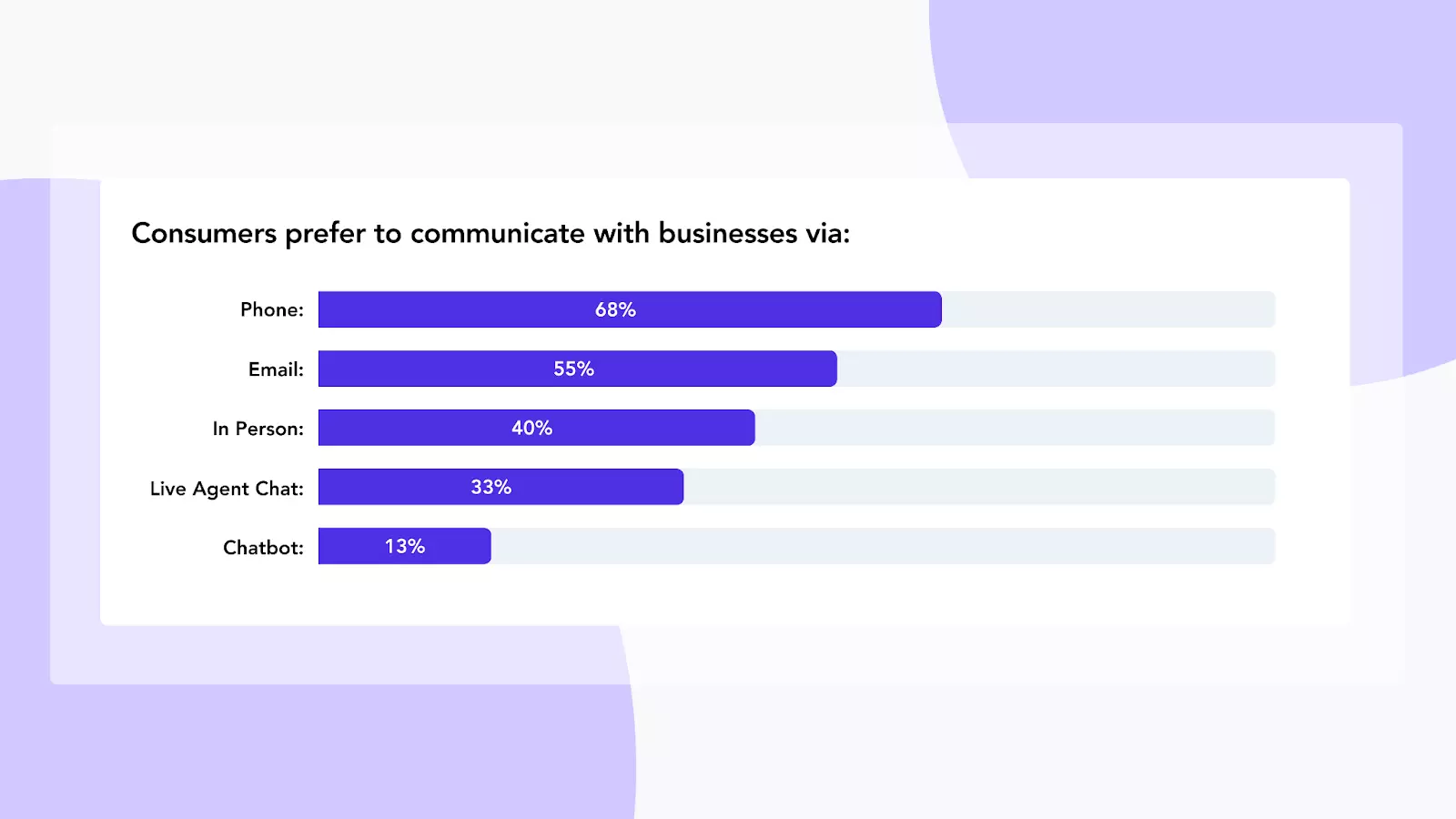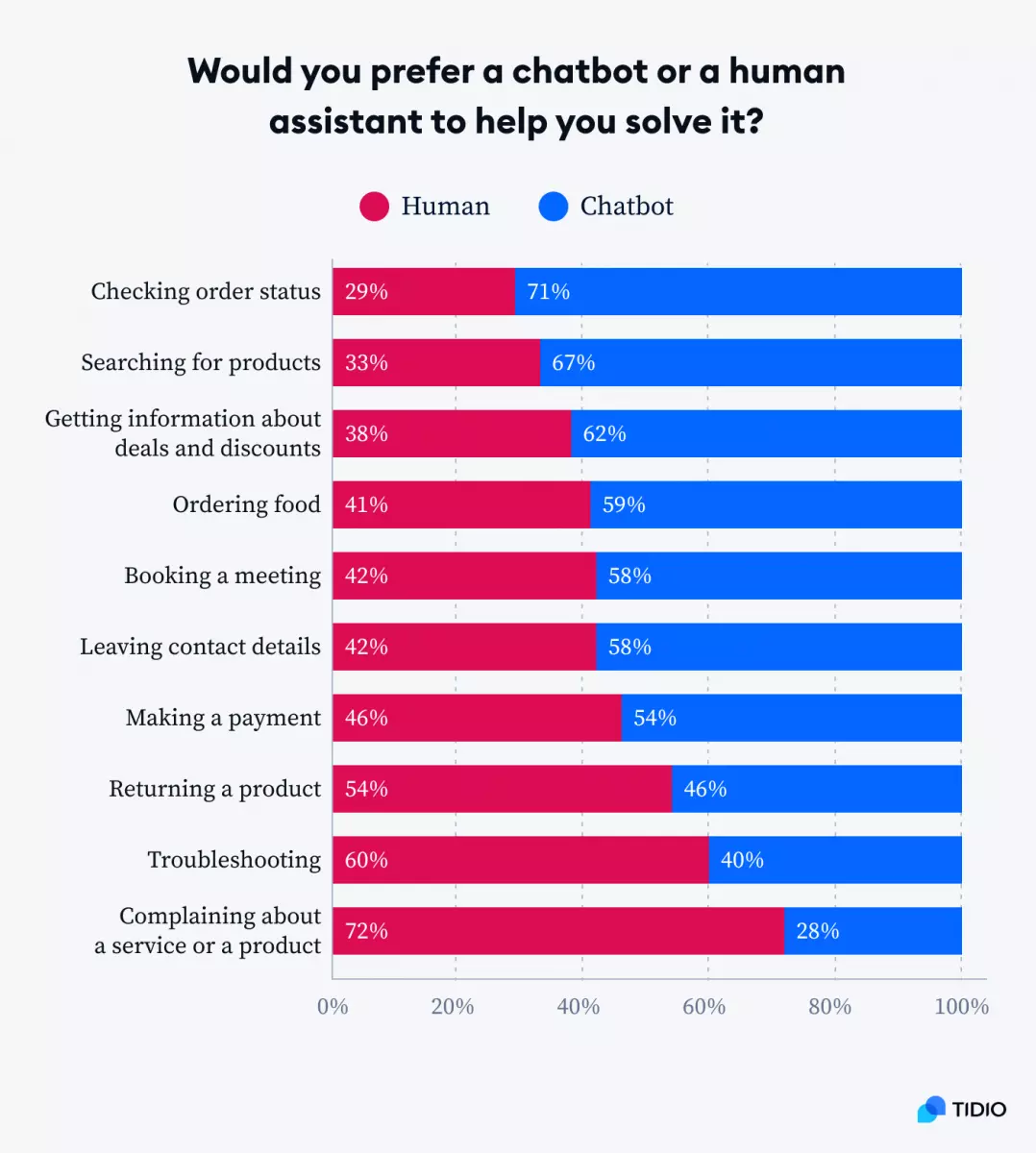6 Ways to Communicate More Effectively With Customers For eCommerce
November 8, 2022 8 min read

In the past, encouraging customers to leave the house and step over the shop threshold was a challenge for businesses. Not anymore. Customers can now access products and services without moving an inch from their sofa. eCommerce represents, therefore, a great boom for business.
So, it’s easy for businesses now, right? Well, no. There are other challenges that eCommerce has thrown up, which must be overcome for a company to thrive in the virtual world. And one of the biggest alongside supply chain and inventory management? Knowing how to establish and nurture effective communications with remote customers.
Why is Communication with eCommerce Customers so Important?
There are two key reasons businesses need to consider customer communications in the eCommerce sphere carefully.
1. Getting Attention in the First Place
One of the wonders of the internet is also its drawback. The World Wide Web delivers incredible democratizing potential, which is great for all those businesses that want to get their wares selling across the country or even the world.
The problem is that if everyone’s out there, megaphoning away about their business, how are you supposed to differentiate your eCommerce brand and stand out?
The answer is to think carefully about communication. Consider who you want to communicate with. This will often inform your decision on the best way to reach your audience and what you might say to reel them in.
2. Maintaining a Relationship
Once a customer has bought from you, the last thing you want is for them to disappear forever. Your business needs to keep the relationship going. After all, it’s well-known that the probability of selling to repeat customers is much higher than the probability of new customers making purchases. And that existing customers are also more likely to spend more than new ones.
To build a strong relationship with existing customers, you must also deliver high-quality customer support. Customers may need to reach out if they’re having an issue with a product and need guidance or technical information to resolve this. You should, therefore, ensure that your customer service team is equipped with all the tools necessary to deliver the best possible customer support.
This involves arming them with robust customer support software that allows them to track customer queries across communication channels so that customers aren’t forced to repeat themselves every time they get in touch. Additionally, equipping them with VoIP phone systems can enhance overall communication capabilities, facilitating smoother and more effective conversations.
Let’s now consider six effective ways to communicate with eCommerce customers.
6 Effective Communication Methods to Connect with eCommerce Customers
1. Social media
Social media can help you achieve your customer communication and marketing goals in many ways, and we don’t have sufficient space here to cover them all. Instead, let’s focus on one particular method.
Using Facebook, Instagram, or Twitter, it’s possible to build an online community. Consumers can engage with like-minded people and feel part of something. They’ll feel even more encouraged to do so if forming part of such a community delivers real benefits.
By following your page or joining your group on social media, customers can receive special offers on product pricing or enhanced features, early notifications of new drops, or they can qualify for invitations to product launches or competitions.
You can also use social media platforms to ramp up communications by encouraging followers to contribute reviews or suggest improvements to your service or products. This kind of UGC (user-generated content) is an extremely effective form of content marketing and is, happily, very cost-effective.
Finally, social media is a great route for getting information out to customers in a speedy and effective manner. People are accustomed to having it working away in the background whatever they’re doing, so it works as a disseminator even among people busy doing something else.
Communication aside, make sure you’re also tapping into the new eCommerce features that certain social platforms are developing. Your company can use Instagram to sell your products and the Shopify-YouTube integration to showcase your products to your YouTube audience.
2. Phone Calls
It seems a little retro to be talking about a technology that’s been with us in one form or another for almost 150 years. But, telephony is still most customers’ preferred method of contacting businesses. So whatever demographic predominates within your customer base, you should include basic telephone communication as one of your main contact channels.
Image sourced from Invoca
However, still keep an eye on your customer base and consider providing additional forms of communication to suit this best. GenZ customers, for example, may prefer to get in touch via Instagram or Twitter. Make sure to cater to your customers’ preferences so that they can always reach out with ease.
If you’re looking to communicate with customers across the globe, you could equip yourself with a virtual phone number. Not only will this allow staff to take calls remotely, wherever they’re based, but you can also use a toll-free number to allow customers to get in touch without having to pay any fees. This will make your business much more accessible.
Another reason for the popularity of phone calls is that they put people directly in touch with a living, breathing human. Customers can be confident that they’ll receive support then and there to answer their questions or resolve their issues.
For instance, if a customer just wants to know how much of a product is in stock, a quick call with support should be able to provide an answer. This is the kind of service customers expect from telephone agents, and with access to integrated inventory management software features, it should be simple to accomplish.
To ensure that your customer service representatives are providing efficient and effective support, you should consider using computer monitoring software. This will allow you to understand how staff are spending their time and, therefore, help you improve the customer experience on calls.
3. Email
A very popular means of communicating with customers, email is still the top marketing channel available. One of the major pluses is that it delivers the ability to communicate with many people, irrespective of their geographical location.
It offers infinite room to expand on lengthy subjects like new product ranges or more text-heavy areas like an exploration of your business’s carbon footprint.
Also, it’s straightforward. Those who are still uncertain about interacting with chatbots or on social media will generally have little or no trouble with email. So, if you’re hoping to appeal to a wide eCommerce customer base, then email can be a good bet.
4. Chatbots
Automated services such as chatbots have revolutionized customer communications. Yes, it’s easy to say that not everybody likes them, but there’s a more sophisticated picture to appreciate: people like to use chatbots for specific types of customer interactions.
Image sourced from Tidio
The most obvious benefit of chatbots is their speed. For customers who simply want a quick response to a simple question, chatbots are far and away the best choice.
They also offer customers a degree of independence, allowing them to self-serve and source the answers to questions themselves.
For those who are uncertain about chatbots, there are ways to make them more approachable by tech neophytes. Attractive animations and positive language can both help.
And yes, it can lead to frustrated customers when a chatbot fails to comprehend a customer’s query, but great leaps are being made in chatbot tech as artificial intelligence continues to develop.
Chatbots can be used effectively alongside help centers to provide more detail on troubleshooting and complex questions. When customers type in a relevant trigger word, chatbots can provide a link to a video recording on the topic with which customers need assistance.
So, make sure that the chatbot option is clearly available on your website. As time goes by, this is likely to prove a popular option for customers.
5. Blogging
Blogging is a very effective way to establish communication with your customers. While the platform is generally considered a marketing channel to acquire new customers, it can also be quite handy in nurturing relationships with existing customers.
According to Scott Chow from The Blog Starter, communication is at the heart of blogging, and this is made possible with comments. Businesses need to nurture discussions with customers on their blogs, and this is a nifty way to establish trust.
Blog posts can also be used to publish content related to customer onboarding, troubleshooting, and FAQs that can then be repurposed or hyperlinked from other channels, including email, help desks, and chatbots.
6. SMS
A suitably quick one to end on, the major power of SMS is its immediacy and brevity. It has a way of cutting through the noise from other channels because it tends to be associated with urgency.
Use this technique to send out short, sharp communications to your customers, and learn how to send auto text on the subject of time-limited offers.
Just don’t overdo it. As mentioned, SMS has a slight emergency-style profile. If you abuse this, you can test the tolerance of your customers, and they may elect to unsubscribe.
Embrace a Range of Communication Channels
There are, of course, myriad channels a business can use to communicate more effectively with its eCommerce customers.
Perhaps the most important takeaway is that a business that only concentrates on one or two effective customer service communication methods will inevitably miss out on possible exposure and consequent sales. So, try to use as wide a range of techniques as possible to appeal to a diverse body of customers.
Then invest in a way to make all these channels easier to manage, ideally on the same platform. If omnichannel is the way forward, good omnichannel management is its essential counterpart.
Author Bio
Nick Shaw has been Chief Revenue Officer (CRO) of Brightpearl, the number one retail-focused digital operation platform which encompasses sales and inventory management software, stock monitoring software, accounting, logistics, CRM, and more, since July 2019 and is responsible for EMEA Sales, Global Marketing and Alliances. Before joining Brightpearl, Nick was GM and Vice President of the EMEA Consumer business at Symantec and was responsible for a $500m revenue business.








